What threatens us in the bathroom? How to make your stay in this room safe? What is the Uzo and where to install it?
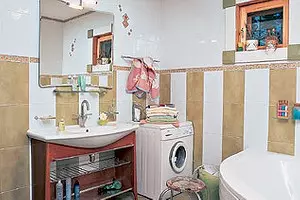
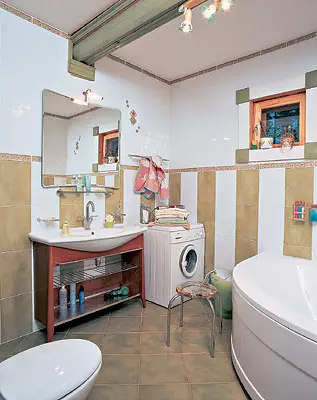
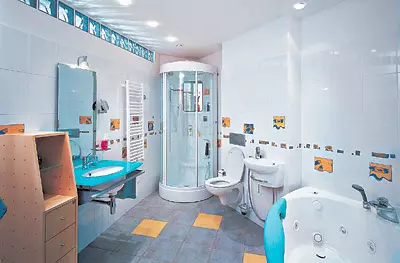
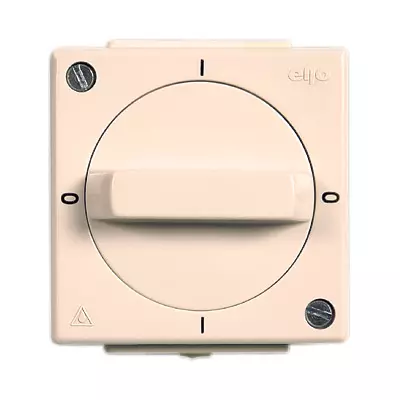
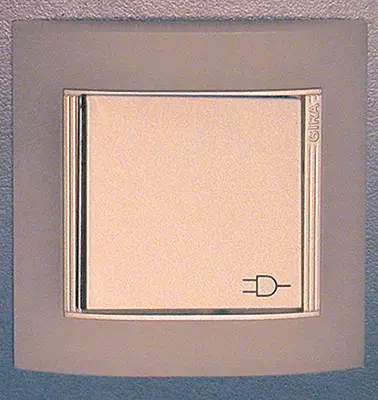
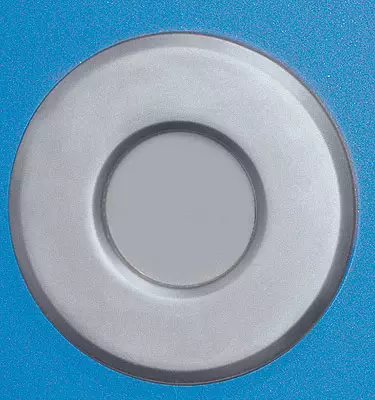
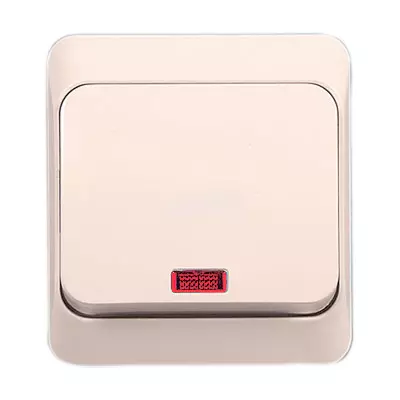
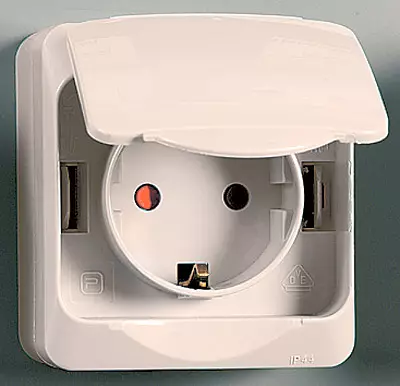
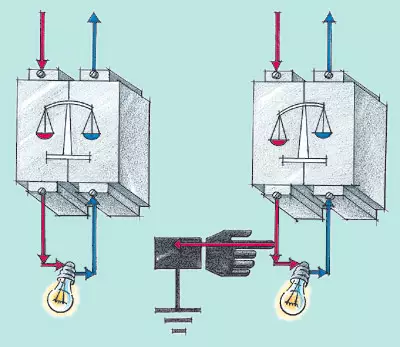
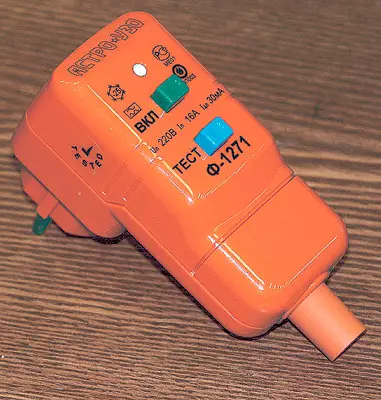
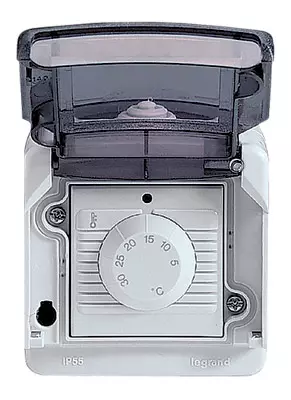
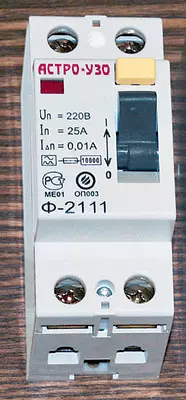
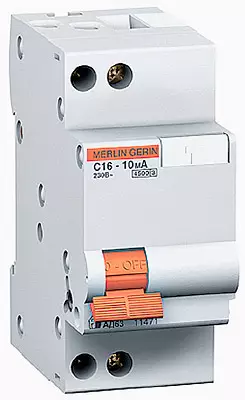
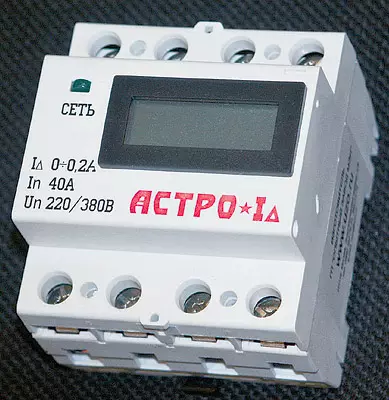
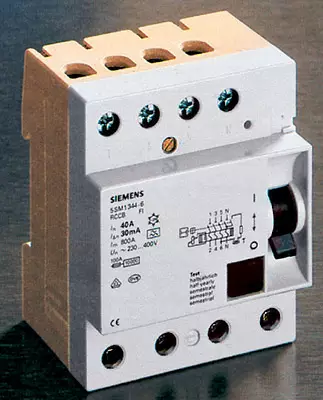
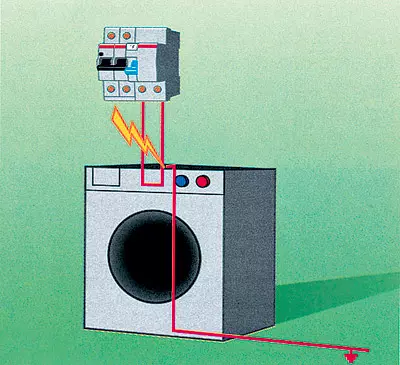
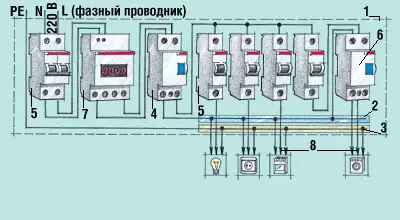
1. Case of the shield
2. Connecting element of zero working conductors
3. Connecting element of zero protective conductors
4. UzO for leakage current 30 mA
5. Automatic switches
6. RCO for leakage current 10mA
7. Electricity meter
8. Lines of group chains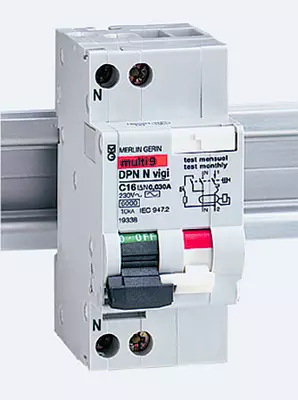
Each of us and at work, and at home surrounds a lot of electrical appliances. In the kitchen, we used to use an electric stove, a kettle and a dishwasher (a refrigerator from the network does not turn off at all), in the bathroom, the electric Bagquartball, hairdryer and washing machine. We use, without even thinking about how safely our communication with these "household assistants" is. Adrisage, at least sometimes, does not interfere.
With regard to the danger of lesion of people with electric shock, all rooms are divided into three types: not representing increased danger, with increased danger and especially dangerous. Conducts with increased danger include those in which at least one of the following conditions are present: dampness or conductive dust; Conductive floors; High temperature or possibility of simultaneously touching a person to having a compound from the ground with metal structures of buildings, technological apparatus, mechanisms, etc., on the one hand, and metal housings of electrical equipment - russia. Cobel is dangerous include "highly raw rooms, the humidity is close to 100%" and the premises in which there are two or more factors corresponding to increased danger. If there are no conditions listed above, it does not represent increased hazard.
Electric current, flowing through the human body, produces thermal, chemical and biological impact. The chemical effect of the electric current is manifested in the electrolysis of blood and other solutions contained in the body, which entails the change in their chemical composition and, therefore, violation of their functions. The biological effect of current for each person individually. It is manifested in the dangerous "excitation" of muscle tissues, the consequences of which depend on the value of the current passed through the body and the duration of its impact.
- The current up to 5 ma is almost no felt.
- Current up to 10 mA is felt, but no dangerous consequences.
- Current in 200 mA with short-term exposure does not cause organic damage, but when exposed to a longer 2c, a reflex reduction of muscles that are in direct contact with the current source (the phenomenon of "unsubstitiation of the wire" can be provoked, the difficulty of breathing, convulsions, and even muscle paralysis, and fibrillation Hearts.
- The current of more than 500 mA, even with short-term influence on a person, leads to the most sad effects of the chest muscles (respiratory stop) or heart muscles and, therefore, fatal outcome. Both types of paralysis can be as a result of direct flow through the region of the chest, and the reflex-response reaction of the nervous system to flow through any area of the body.
What are we we? Yes, the modern bathrooms should be attributed to the category of particularly dangerous premises. What makes you think about. A conversation on how to make your stay in this room safe, and a real article is dedicated. Immediately, it is not possible that we will use Pue-rules of the electrical installation devices in it (Edition of the 7th, chapter1.7), in which the security requirements are mainly set out during the operation of power grid and electrical equipment in residential and public buildings. This document is written dry (if not to say a stateless) language, because it is intended for specialists. The usual citizens never read it (as well!). Nevertheless, we will try to do it. And during the entire conversation about the electrical safety of the bathroom, we will refer to this fundamental document, explaining (helping professionals) its content.
What threatens us in the bathroom?
Speaking by the dry language PUE, "the main source of danger in the bathroom is the appearance of voltage on the metal parts of the luminaires, electrical appliances and pipelines during damage to the insulation of electrical wires due to the current leakage through the insulation of electrical installations and wires (cables). The leakage can be caused by a deterioration in isolation under the action of moisture, heat, mechanical impacts, etc.. " In other words, the electrical appliance with faulty electrical insulation is able to strike a person with a current. And to hit much stronger than if it happened in any other room at home. Why is stronger?It is necessary to remember that it is not dangerous in itself high voltage, and the value of the electric current flowing through the human body. As follows from the Ohm law, this value is directly proportional to the applied voltage (the numerator of the formula) and inversely proportional to the resistance (denominator of the formula), and in this case the amount of resistance: human body (the resistance of the internal organs - 500-600 ohms + skin resistance) + Him on foot shoe + floor. We take a bath or shower without shoes, under your feet, it is often wet and therefore a conductive surface, and the resistance of the wet skin is extremely small. So the amount in the denominator of the formula decreases hardly to the resistance of the internal organs of a person (500-600 ohms). That is why the likelihood of electric shock in the bathroom is much higher than anywhere, and the consequences of such a lesion are much more serious.
The second danger is the emergence of a fire. Yes, yes, do not be surprised! Fire in the bathroom starting with the fire existing electrical equipment in it. For example, a current of only 500 mA, flowing through insulation (combustible material) for some time, is able to cause its fire. Leakage currents passing on metal parts (boxes, pipes, beams, etc.), heated them, which can also lead to a fire.
How to make your stay in the bathroom safe?
To achieve this, it is not necessary to reinvent the bicycle set of necessary measures for a long time thought out and everything is painted in the same PUE.
Let's start with wiring. We quote: "Unauna, bathrooms, bathrooms, shower should be used hidden wiring. It is not allowed to lay wires with metal shells, in metal pipes and metal sleeves." For us, this means that there is no special requirements for using wires in the bathroom, it should be a three-wire system, which has replaced earlier than the two-wire and already becoming familiar: phase conductor, zero and protective. The wire (it is more correct to name the cable) must have a double isolation, each of the conductors is isolated and then all together are in an insulating shell. The conductor cross section must correspond to the plug-in. The laying of the lines with a wire in rubber isolation is not recommended, since rubber becomes fragile with time, cracks and sharpened, the path for leakage currents appears.
The three-wire system is needed so that you can ground the housing of all electrical appliances located in the bathroom: washing machine, shower (if it uses electricity), lamps, etc. The hidden wiring should be (even if it is open in the rest of the rest) so as to eliminate the impact on it moisture. Why it is impossible to use wires with metal shells, in metal pipes and sleeves, too, it is also clear: so that it does not arise corrosion, which can cause the destruction of isolation. The exceptions are pipes made on all-point connections (welding). And then, provided that the pipe will be grounded (to fulfill it in the apartment / house it is unlikely to succeed). Therefore, it is better to use special electrical plastic plastic boxes and pipes with connecting elements that ensure the necessary degree of protection (ease of protection, a little later). The boxes and pipes can be hidden (for example, behind the suspended ceiling) or clogged into the wall.
Why requires protective grounding and how is it organized? "Yes, because I lived somehow without this of your grounding! Hidel will live," can declare an impatient reader. Well, what will they objize? Lucky man with quality electrical appliances. Avteda probably in the life of this very impatient reader was situations when, holding, for example, for the body of a working washing machine or a refrigerator, he felt a slight pinching that caused "discharge" on his body body that appeared on the case due to current microchildren (wear Isolation plus damp). If these were not microcutrons, but the phase breakdown on the body of the device, then the point was hardly limited.
Protective grounding is just designed to prevent human damage to electric current when touched to parts of electrical installations, which, with any faults (insulation damage, etc.), can be under voltage. The probability of such a damage in the presence of grounding becomes minimal. To improve security, it makes sense to ground not only the electrical appliances installed in the bathroom, but also the housing of the metal (steel or cast-iron) bath or a shower pallet (for this there is a special terminal). Grounding should be carried out by a wire with a cross section of at least a phase conductor cross section.
Degree of IP protection
The applied classification of electrical installations complies with the International Standard of International Protection- IP. IP letters and are used in marking. After them are two digits: the first shows the degree of protection against the penetration of solid particles, the second is the degree of protection against water. H- requirement is not negotiated.Degree of IP protection
| First digit: protection against solid particles | The second digit: protection against moisture penetration | ||
|---|---|---|---|
| IP. | Definition | IP. | Definition |
| 0 | There is no defense | 0 | There is no defense |
| one | Protection against touching hazardous details of the back of the hand. 3 Assessing from solid bodies exceeding 50mm | one | Protection against vertically falling water droplets |
| 2. | Protection against water splashes falling at an angle to 15 to vertical | ||
| 2. | Contact protection with finger hand. Protection against solid bodies exceeding 12mm | 3. | Protection against water splashes falling at an angle of up to 60 to vertical |
| 3. | Protection against access to dangerous details using the tool. Protection against ingestion of solid objects exceeding 2.5mm | four | Protection against water splashes from all directions |
| five | Protection against water jets from all directions | ||
| four | Protection against touches with wire to dangerous details. Protection against ingestion of solid objects exceeding 1mm | 6. | Full protection against splashes and strong jets like marine rums |
| five | Protection against penetration of harmful dust that can disrupt the device | 7. | Protection against short-term dive to the depth of 15cm to 1m |
| 6. | Absolute dustproof | eight | Protection against water with long stay in water at a depth of more than 1M * |
| * - the exact data indicates the manufacturer |
In individual houses for the grounding device, they make a special grounding contour (we will not stop on its device now the topic for a separate conversation). In the Zodgorod apartment grounding is usually taken from the body of a storey electric tailor. Invomes of the new building on the shield, as a rule, there is a special terminal (sometimes it can be welded to the shield bolt with a nut) with an appropriate designation. The inner buildings of the Terminem may not be, but the shield is still incorrect. If there are doubts about this, it is necessary to contact the DEZ-local electrician is obliged to know whether there is a reliable grounding in the shield or not.
And since we decided that the protective ground from the panel in the bathroom was needed, it is better to simply hold a new three-wire cable, drinking lighting and sockets from it. Specialists who will perform this work, anyway, how much lived in the stacked wire - one (earth) or three, except that the wire itself will cost a little more expensive. But as a result, you will have the opportunity to install a separate protective device (RCD) for the bathroom on the panel. The installation option on the old two-wire network is inconvenient, it is difficult to find the supply wire, and the shield with the UZO will have to be placed at the entrance to the bathroom, that the aesthetics will not add the apartment.
We now turn to the lighting devices and electrical equipment. We cite PUE again: "Only that electrical equipment should be used, the shower and bathrooms, which is specifically designed for installation in the corresponding areas of the specified premises ... Uwanu, bathrooms, parilots, etc. Installing distribution devices and control devices is not allowed. . This means that all camshafts must be located outside the bathroom. Under control devices in this case, switches are meant. The only exception to the rules with the IP44 degree of protection installed under the ceiling and driven by cord (person's contact with switch Must be completely excluded). Take this article and switches with IP44 protection with a radio or infrared drive are also included.
I will explain what kind of danger zones and degree of protection. Let's start with the danger zones available in the bathroom (omezeles4).
- Zone 0- volume within the bath or shower pallet.
- Zone 1- volume limited by a vertical surface within a bath or a shower pallet.
- Zone 2 is a volume limited to the vertical surface of the zone1 and the vertical surface located at a distance of 60 cm from it in parallel to it.
- Zone 3- volume limited by the outer surface of the zone2 and the vertical surface located at a distance of 240cm from it.
- In zone 0- with the degree of IPX7. Electrical appliances can also be used to 12V, and the power supply (transformer) should be placed outside the zone.
- In zone 1- with the degree of IPX5. Here only water heaters that have the appropriate degree of protection can be installed.
- In zone 2- with the degree of IPX4. These are water heaters, outlets and lamps with a degree of protection against water penetration at least4.
- In zone 3- with the degree of IPX1. It is allowed to install plugs connected to the network through separation transformers or a protective shutdown with a trigger current to 30mA.
- PRODAX (Hungary), Hydra series for outdoor installation.
- Ensto (Finland), Kosti Series for Outdoor Installation
- Busch-Jaeger-ABV (Germany), Allwetter44 series for hidden and busch-duro 2000ws for open installation.
- ELJO-LEXEL-SCHNEIDER ELECTRIC (France), AQUA-series for outdoor installation (IP44 and IP55).
- ELSO-LEXEL-SCHNEIDER ELECTRIC, AQUA-IN series for hidden and aqua-top for outdoor installation.
- Legrand (France), Urbano (IP44) is an economical series for internal and outdoor installation. Also offers PlexO55S (IP55) in several types: monoblock (sockets, switches, thermostats with IP55 protection, already collected in the case) and a modular option (a universal box that ensures the degree of protection IP55 is capable of accommodating any device).
Washing products with IP44 protection produce domestic manufacturers. For example, "Mosektropribor" (Moscow) and Vessen (Kozmodemyansk).
Prices for wiring products of various firms, rub.
| ElectricalInstallation products | Manufacturer (series) | |||||||
|---|---|---|---|---|---|---|---|---|
| ELJO (Aqua) | ELSO (Aqua-in) | ELSO (Aqua-TOP) | PRODAX (HYDRA) | Vessen (Vessen) | Siemens (Delta Line) | Legrand (Urbano) | Legrand (Plexo55S) | |
| Easy socket with grounding and lid | 226. | 127. | 131. | - | 35. | 110. | 157. | 274.5 |
| Single breaker | 425. | 152. | - | 119. | 37. | 120. | 137. | 178. |
| Single folder with backlit | - | - | - | 198. | - | 150. | 167. | 332. |
| Single-block switch from two places | - | - | 144. | - | - | 270. | 153. | 747. |
| Single-block switch with two illumination places | - | - | 218. | - | - | 290. | 201. | - |
| Two-block switch | 567. | - | 169. | 134. | - | 173. | - | 406. |
Lighting devices with protection from IP44 to IP65 is also sufficient. These are point, embedded in the ceiling lamps, backlight mirrors, daylight sources, etc. They offer them in our market such firms such as Nobile (Germany), Xenon (Spain), Ensto (Finland), General Electric (USA), Philips (Holland), "Light Technologies" (Krasnogorsk) and others.
It is possible to do without the wiring equipment described above the electrical equipment with the degree of protection of IP44 only in large bathrooms. Looking at the old building it is unlikely to succeed. First, since the zone3 of the standard bathroom of the multi-storey house (area of 3-3,9m2) includes except for the wall opposite the bath and the sections of the walls adjacent to it from 5 to 50 cm. Place it is in this zone that all electrical equipment is hardly possible (as well as there is nothing to say about the aesthetics). Secondly, because the plug sockets in this case, according to PUE, should be connected through a separation transformer. It will evidence, to power anything other than the electric shaver, it will be impossible due to the low power of the transformer. The installation of the same separation transformer will require greater power, except for high one-time acquisition costs, also areas for this installation, as well as a permanent supervision (transformer from the network does not turn off). If adding to the current increase in the amount of electricity, it becomes quite obvious that the option with a separable transformer is unreight. That is, the only output (provided by PUE) is the use of outlets of a class not lower than IP44 with a protective shutdown device.
What is UDO?
The protective shutdown device (UZO) monitors the current leakage from the chain (the one that creates a current passing through the human body) and provides automatic shutdown of all phases or the Poles of the Emergency Plug of the Electric Pole during the time, as a rule not exceeding 0.02C (+40 ... -60%) from the moment of leakage. On these devices, our magazine wrote repeatedly, so we will not stop in detail on them, just add previously printed by new information.
NEO of two types are produced: AC and A. Type AC reacts to the leakage of variables (sinusoidal) currents by such devices we have said so far. But in electrical circuits that feed equipment, which contains rectifiers or controlled thyristors, with a breakdown of insulation possible is a leakage of not only variable, but also permanent (pulsating) current. The AU type UzO is practically not reacting to it. Avt Uzo type reacts - it is intended for such cases. Since the diagram of measuring the difference in currents in the Type A UDO is more complicated, these devices are 1.1-1.5 times more expensive than the AU type UDO. The need to use Uzo type A in the current regulatory documents are not negotiated. But in the instruction manual, such as washing machines, you can find the requirement to set this type of Uzo (you need to pay attention to the selection of the machine).
On sale, in addition to the Uzo, installed on the distribution panel, you can meet the electrical outlet with the built-in UzO. These devices are two types: the first is set to the place of the existing socket, the second is simply stuck in the existing socket and then in the electric appliance fork. So a single type of device with the built-in narrow-called "Uzo-plug". These three devices are good, first of all, to get rid of the need to change the electrical wiring in the bathroom in the houses of the old building. Applings of a higher price-outlet with a built-in UzO will cost approximately 3 times more than the Uzo installed on the distribution shield. Release sockets with built-in UzO, for example, companies such as AVB and Gira. The domestic "Uzo-fork" from "Astro-Uzo" will cost the buyer in 594 rubles. It is advisable or not to apply devices with a built-in UDO, to solve the consumer itself.
Another worthwhile protective device is the differential automatic combination of the circuit breaker with the UZO (by the type "two water"). It triggers in both cases, both when leakage current to earth and short circuit and overload. Like the UDO devices, differential automata are produced by different operating current and for different leakage current. It is advantageous to use such a machine in the case when there is not enough space to install two separate devices in the electrical cabinet. The same differential machine can do as in 1.5press more expensive than a separate circuit breaker and the RCD and the same amount that a separate RCD, it all depends on the manufacturer.
On our market there are RCDs and differential machines of both Russian and foreign production. From domestic firms to consumers are known to the Stavropol Plant "Signal" (produces electronic "UZO-20"), the Research Institute "ProjectElectromontazh" (produces an electronic "UZO-2000"), the company "Astro-Uzo" (offers an electromechanical device "Astro * Uzo") . From foreign companies it is worth name, first of all, those who have long and work seriously in our market: Siemens, ABB, Legrand, Schneider Electric. You can also meet the Chinese production Uzo on the market, refer to the quality of which it is necessary to extremely carefully.
The French concern Schneider Electric offers Russian buyers at once two gammas of the devices of this class-elite multifunctional MULTI9 series and a series of devices specifically designed for the equipment of residential buildings "house".
Not so long ago, the Russian company "Astro-Uzo" presented to the consumers a nominee "Astro * i". It not only protects the chain from leakage, but also shows the leakage current value at the LCD. It will cost "showing" a protective shutdown device in 1980-2490 rubles, depending on the value of the nominal current (40 and 63a).
Which of manufacturers prefer, not to advise. But whatever equipment you choose, buy it not to the attack, but in a specialized store or to the official dealer of the company. Hospital, the domestic market is simply sisit of fakes. Check out when purchasing equipment, do not hesitate to ask the quality certificate, and even better, the "certificate for production", meaning that not only this batch of goods, but any product manufactured by the product has the necessary level of quality.
Prices for UZO and differential machines of various production, rub.
| Product | Manufacturer (series) | |||||
|---|---|---|---|---|---|---|
| ABB. | Legrand. | Schneider Electric ("House") | Schneider Electric (Multi9) | Siemens. | "Astro-Uzo" | |
| Differential automatic machine 6A 30MA (AC) | 2032. | - | - | 1966. | 1112. | 936. |
| Differential automatic machine 10A 30MA (AC) | - | 1484. | - | 1752. | 1112. | 948. |
| Differential machine 16A 30MA (AC) | 1839. | 1484. | 1356. | 1752. | 1112. | 948. |
| Differential automatic machine 40A 30MA (AC) | 1996. | 1827. | 1385. | 2109. | 1112. | 1020. |
| UZO2R 16A 10MA (A) | 2234. | 1419. | - | - | 1881. | 1120. |
| UZO2R 16A 10MA (AS) | - | - | - | 1534. | 1390. | 1020. |
| UZO2R 40A 30MA (AC) | 1273. | 1094. | 901. | 1371. | 962. | 960. |
| UZO2R 25A 30MA (A) | 1909. | - | - | - | 1176. | 1060. |
| UZO2P 63A 30MA (AC) | - | 1398. | 1009. | 1748. | 1212. | 1296. |
Where and how the UDO is installed
RED protectors are installed in the apartment distribution cabinet (by the way, you can use already available cabinets). Mounting options are several.
One Uzo to all housing. The device is placed after the introductory machine, protecting the entire apartment (house). This case usually uses the Uzo to the leakage current 30mA. Animals of such a solution should include a low cost level and the fact that it is always always possible to establish a place in the closet. Kminysamm- It is difficult to determine which of the existing lines a leakage occurred, and that when the device is triggered, the entire apartment remains without light.
One "introductory" UZO (30mA) + Additional Uzo (10mA) for each line (for example, on lines that feed the washing machine, jacuzzi and especially electrical heating floors). Of course, this is a more progressive option compared to the previous one, since it allows you to turn off when leucing only the line in which it originated (the entire apartment without light remains). Kminiusams will take higher costs of equipment, as well as the need to have a much larger place in the closet.
This scheme can be used and as an option to protect the whole floor in a large cottage. In this case, next to the "introductory" circuit breaker, protecting the whole house, you need to install the "introductory" UZO to the leakage current of 300-500mA (if a three-phase current of 380V is supplied to the shield, then a four-pole RCD is installed). In this case, it is better to apply it is not better to apply the "usual" UDO (modern triggering 0.02c), and the so-called selective (characterized by the letter S in the marking), the response time of which is slightly over- 0.3-0.5 s. A longer response time will give the opportunity to react to the leakage and disconnect the "first line" devices (10 and 30mA, protecting individual electrical appliances or lines of the house / apartment). Tonight If those for some reason have not been "worked," turns off the entire power supply scheme entirely. The "introductory" UZO will also turn off the electricity throughout the house during a fire caused by the electrical wiring fault.
Only qualified specialists should be dealt with by installing and adjusting the power supply using the UZO. Only in this case will you have a guarantee that protection will work on time.
The editorial board thanks the company "Crocus-Trade", "Astro-Uzo", ABB, "TFS-ELEK", "ELIPS-GARANT", "TRISTAR", "ENERGO LIGHT", "HUSEEKTROTHIR" and PERSONIC I.A. Dobrovolsky for help in the preparation of the material.
